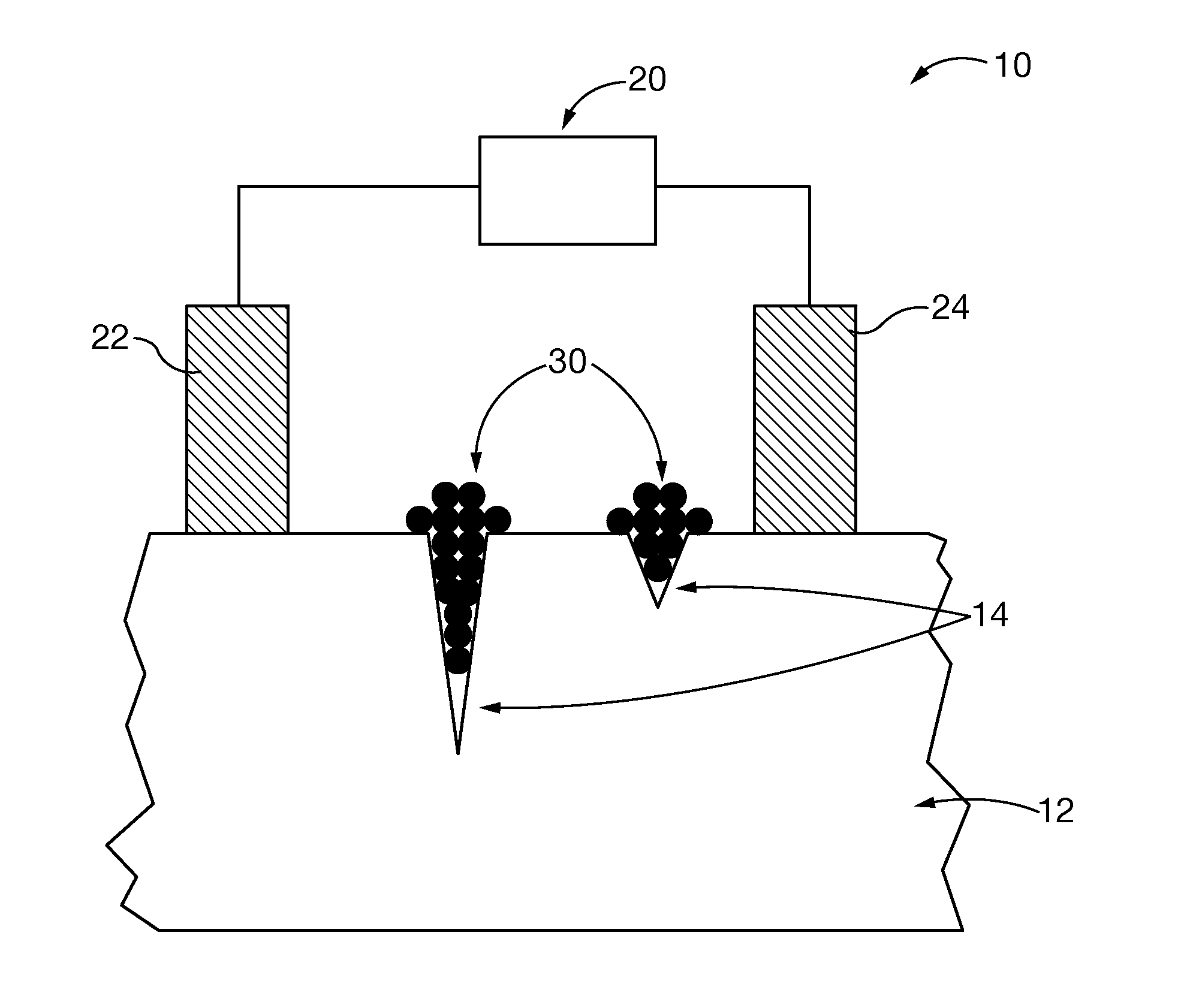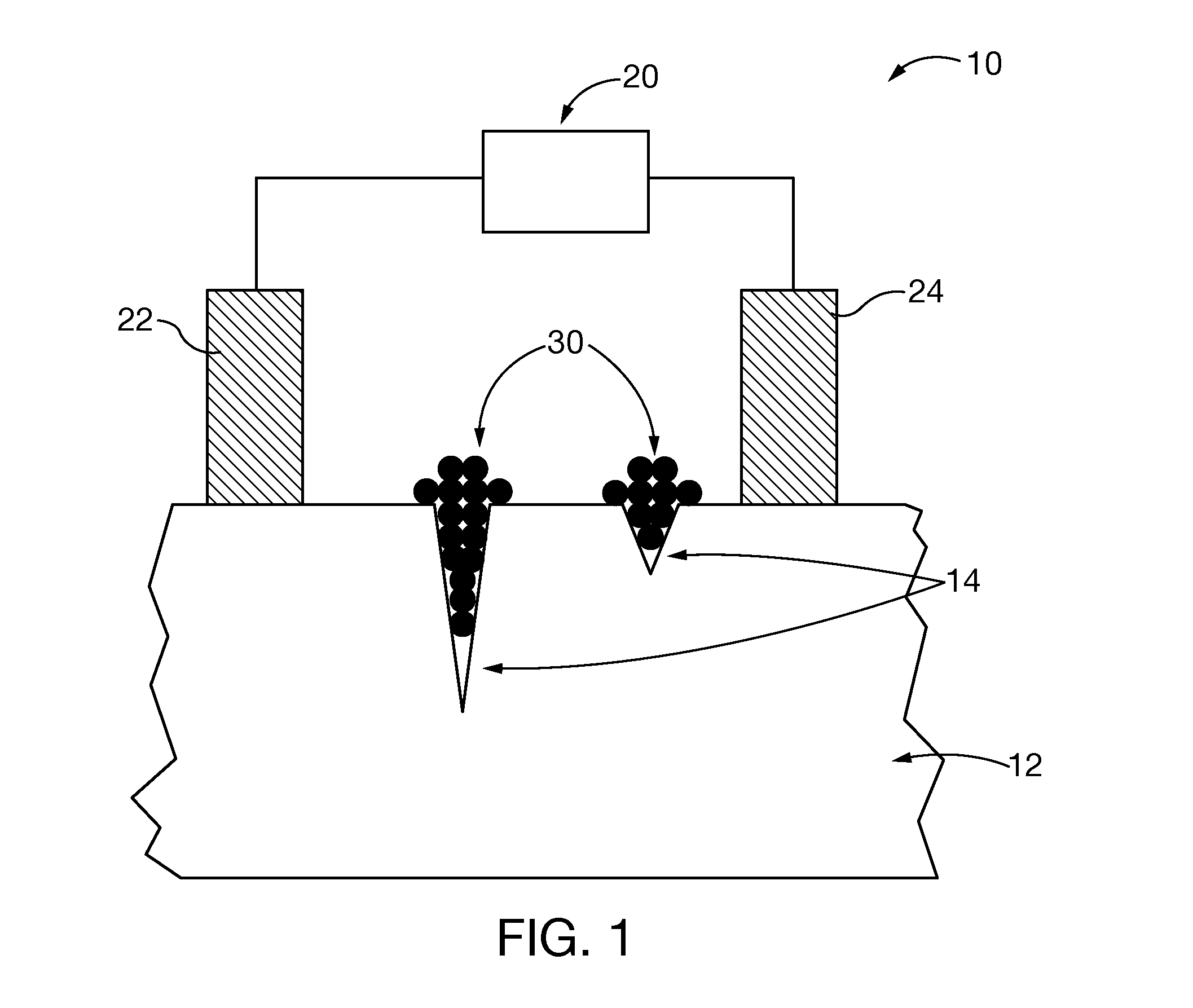Method for resistance braze repair
a technology of resistance braze and repair method, which is applied in the direction of manufacturing tools, transportation and packaging, and so on, can solve the problems of difficult subsequent structural welding, difficult to repair or new fabrication of nickel and cobalt based superalloy materials used to manufacture turbine components, and blades that are susceptible to solidification, so as to achieve the effect of not degrading the structural properties of the component substra
- Summary
- Abstract
- Description
- Claims
- Application Information
AI Technical Summary
Benefits of technology
Problems solved by technology
Method used
Image
Examples
Embodiment Construction
[0031]After considering the following description, those skilled in the art will clearly realize that the teachings of the present invention can be readily utilized in joining and / or repair of metallic substrates, and more particularly repair of superalloy turbine blades and turbine vanes. Brazing alloys having high electrical resistivity are bonded to the substrate by passing electric current generated by a known electric resistance brazing apparatus through the brazing alloy. Heat generated by the flowing electric current is concentrated in the high resistivity brazing alloy rather than in the substrate. The concentrated heat is sufficient to melt the brazing alloy, causing it to bond to the adjoining superalloy substrate material without degrading structural properties of the superalloy.
[0032]FIG. 1 shows apparatus 10 for resistance braze repairing an exemplary substrate 12, such as a superalloy turbine blade, having one or more surface crack defects 14. A current generating appa...
PUM
| Property | Measurement | Unit |
|---|---|---|
| metallic | aaaaa | aaaaa |
| electrical resistivity | aaaaa | aaaaa |
| melting point | aaaaa | aaaaa |
Abstract
Description
Claims
Application Information
 Login to View More
Login to View More - R&D
- Intellectual Property
- Life Sciences
- Materials
- Tech Scout
- Unparalleled Data Quality
- Higher Quality Content
- 60% Fewer Hallucinations
Browse by: Latest US Patents, China's latest patents, Technical Efficacy Thesaurus, Application Domain, Technology Topic, Popular Technical Reports.
© 2025 PatSnap. All rights reserved.Legal|Privacy policy|Modern Slavery Act Transparency Statement|Sitemap|About US| Contact US: help@patsnap.com



